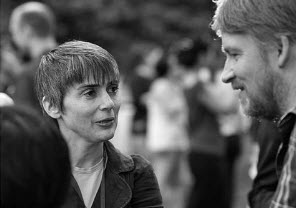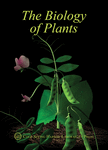|
LXXVII: The Biology of Plants 2012 |
|
|

|
O. Leyser, D. Jackson SYMPOSIUM SYNOPSIS LIST OF PARTICIPANTS CONTENTS OF SYMPOSIUM VOLUME PHOTOGRAPHS PUBLISHED VOLUME  |
The Biology of Plants
May 30 - June 4, 2012
Symposium Synopsis
Organizers: Bruce Stillman, Terri Grodzicker, Rob Martienssen & David Stewart
The Cold Spring Harbor Symposia on Quantitative Biology bring together scientists from all over the world to present and evaluate new data and ideas in rapidly moving areas of biological research. Each year, a topic is chosen that appears to be at a stage where general and intensive scrutiny and review are needed. Criteria for selection of topics are numerous, but they include the rate of progress in a given field, how recent research is highlighting connections between fundamental biological mechanisms, and the potential appli- cations of the new discoveries to human health and society. Cold Spring Harbor Laboratory selected the theme of The Biology of Plants for the historic 77th Symposium in the series.
Plants are integral to human well being, and many species have been domesticated for more than 10,000 years. Evidence of plant scientific investigation and classification can be found in ancient texts from cultures around the world (Chinese, Indian, Greco-Roman, Muslim, etc.), whereas early modern botany can be traced to the late 15th and early 16th centuries in Europe. During the past several decades, plant biology has been revolutionized first by molecular biology and then by the genomic era. The model organism Arabidopsis thaliana has proved to be an invaluable tool for investigation into fundamental processes in plant biology, many of which share commonalities with animal biology. Plant-specific processes from reproduction to immunity and second messengers have also yielded to extensive investigation. With the genomes of more than 30 plant species now available and many more planned in the near future, the impact on our understanding of plant evolution and biology continues to grow. Our increased ability to engineer plant species to a variety of ends may provide novel solutions to ensure adequate and reliable food production and renewable energy even as climate change impacts our environment.
The decision to focus the 2012 Symposium on plant science reflected the enormous research progress achieved in recent years and was intended to provide a broad synthesis of the current state of the field, setting the stage for future discoveries and application. This is the first Symposium in this historic series that focused exclusively on the botanical sciences. The Symposium spanned a broad range of areas of investigation including genetics, biochemistry, molecular and cell biology, developmental biology, physiology, and population / evolution studies at levels ranging from the single cell to the entire organism and from single genes to genomes; plant-specific processes and pathways featured broadly throughout the meeting. Effort was made to balance fundamental biological discoveries with applications relevant to societal well being including improved crops, fuel, and habitat. In arranging this Symposium, the organizers were dependent on the guidance of a broad cadre of advisors including Drs. Phil Benfey, JoAnne Chory, Nam-Hai Chua, Jeff Dangl, Joe Ecker, and Chris Somerville. Opening night speakers included Sarah Hake, Craig Pikaard, Joanne Chory, and Jeff Dangl. Rob Martienssen delivered a compelling Dorcas Cummings Lecture on Send in the Clones to Laboratory friends, neighbors, and Symposium participants in advance of the annual dinner parties.
This Symposium was attended by almost 320 scientists from more than 20 countries, and the program included 65 invited presentations and 169 poster presentations. To disseminate the latest results and discussions of the Symposium to a wider audience, attendees were able to share many of the Symposium talks with their colleagues who were unable to attend using the Leading Strand video archive, while interviews by Gemma Bilsborough, Ines Chen, Kate Creasey, Emilie Marcus, Richard Sever, and Jan Witkowski with leading experts in the field were arranged during the Symposium and distributed as free video from the Cold Spring Harbor Symposium interviews website.
We thank Val Pakaluk, Mary Smith, and Ed Campodonico and his staff, in the Meetings & Courses Program, for their assistance in organizing and running the Symposium, and John Inglis and his staff at Cold Spring Harbor Laboratory Press, particularly Rena Springer, for publishing the printed and online versions of the Symposium proceedings. Photographer Connie Brukin captured candid snapshots throughout the meeting. Fundsto support this meeting were obtained from the National Science Foundation, the Gordon & Betty Moore Foundation and the Gatsby Charitable Foundation. Financial support from the corporate sponsors of our meetings program is essential for these Symposia to remain a success and we are most grateful for their continued support.
Bruce Stillman
Terri Grodzicker
Rob Martienssen
David Stewart
Search images: